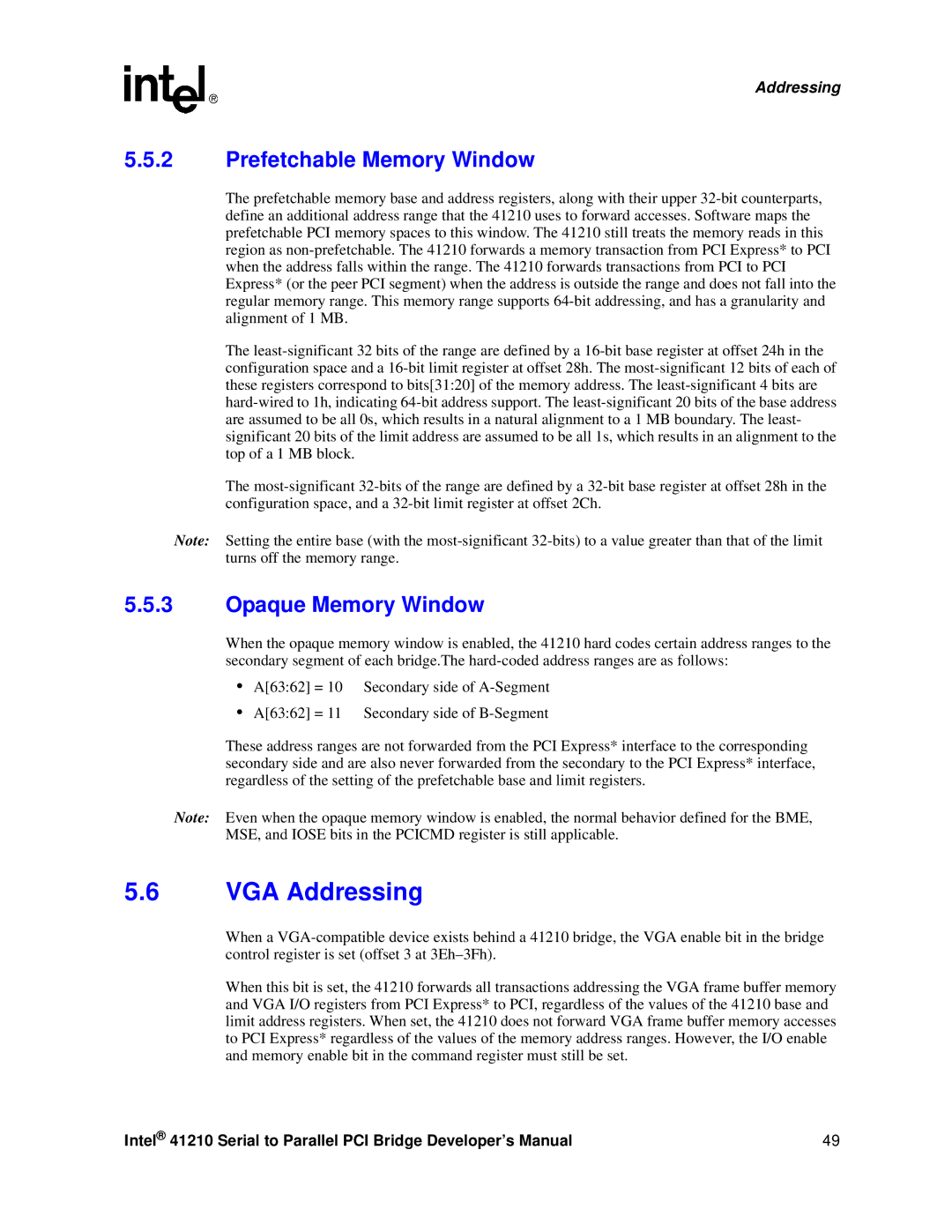Addressing
5.5.2Prefetchable Memory Window
The prefetchable memory base and address registers, along with their upper
The
The
Note: Setting the entire base (with the
5.5.3Opaque Memory Window
When the opaque memory window is enabled, the 41210 hard codes certain address ranges to the secondary segment of each bridge.The
•A[63:62] = 10 Secondary side of
•A[63:62] = 11 Secondary side of
These address ranges are not forwarded from the PCI Express* interface to the corresponding secondary side and are also never forwarded from the secondary to the PCI Express* interface, regardless of the setting of the prefetchable base and limit registers.
Note: Even when the opaque memory window is enabled, the normal behavior defined for the BME, MSE, and IOSE bits in the PCICMD register is still applicable.
5.6VGA Addressing
When a
When this bit is set, the 41210 forwards all transactions addressing the VGA frame buffer memory and VGA I/O registers from PCI Express* to PCI, regardless of the values of the 41210 base and limit address registers. When set, the 41210 does not forward VGA frame buffer memory accesses to PCI Express* regardless of the values of the memory address ranges. However, the I/O enable and memory enable bit in the command register must still be set.
Intel® 41210 Serial to Parallel PCI Bridge Developer’s Manual | 49 |
